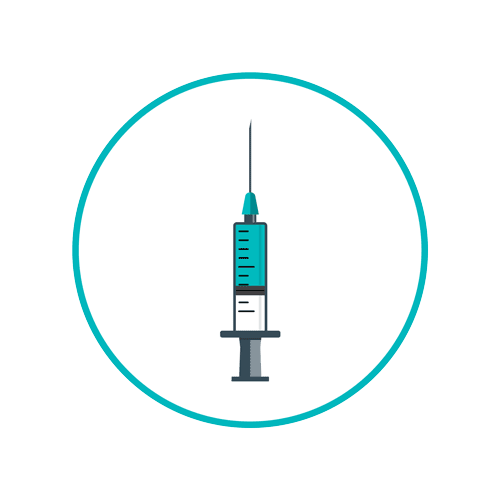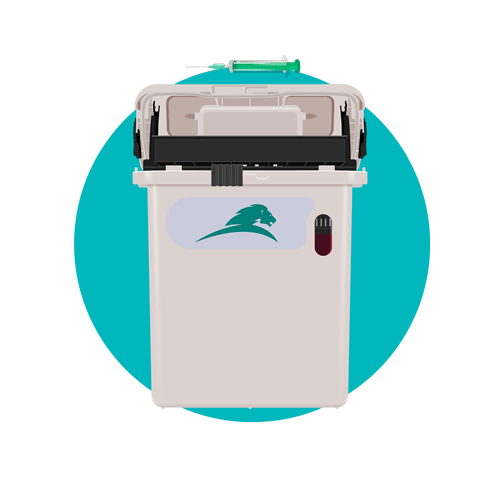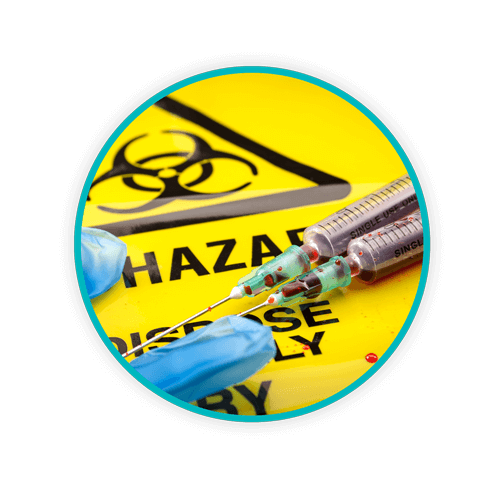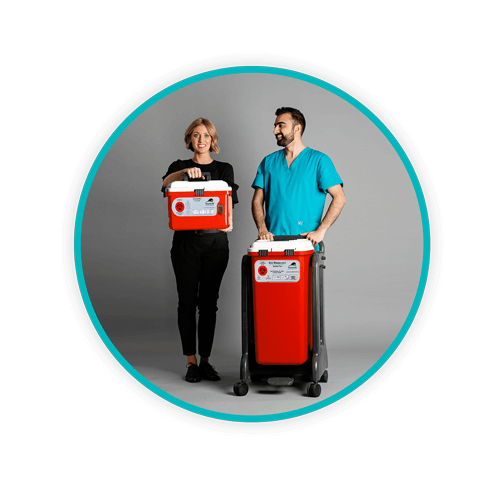Guide to Washington D.C. Medical Waste Regulations

Washington, District of Columbia is not only the capital of the United States, but a full-fledged city with a blend of neighborhoods, demographics, and cultures located on the banks of the Potomac River. In addition to its numerous and famous landmarks such as the Lincoln and Washington memorials, the National Mall, the White House, the United States Capital building, cathedrals and museums, the district is also home to approximately 700,000 residents, all of whom occasionally require healthcare services provided by over 15 hospitals and medical centers in the region.
TOPICS WE WILL COVER:
1 / Who regulates waste management in Washington DC?
2 / How does Washington DC define medical and hazardous waste?
4 / Transportation of medical waste
5 / Where to find medical waste statutes and regulations for Washington DC
6 / Daniels Health promotes cradle-to-grave waste management
Who regulates waste management in Washington DC?
As in states throughout the country, the District of Columbia must follow federal guidelines when it comes to healthcare waste management. That includes following the regulations and laws of the Environmental Protection Agency, the Department of Transportation, the Drug Enforcement Agency, the Occupational Safety and Health Administration, and more. In addition, the District of Columbia’s Department of Energy and Environment (DOEE) provides guidance specific to the municipality.
How does Washington DC define medical and hazardous waste?
In the District of Columbia, medical waste is defined in the District of Columbia Hazardous Waste Act as “solid waste from medical research, medical procedures, or pathological, industrial, or medical laboratories.” It includes but is not limited to:
- Cultures and stocks of infectious agents and/or biologicals
- Pathological waste that includes organs, tissues, or body parts removed during autopsy or surgery
- Human blood waste and blood products
- Sharps that have been used in medical research or patient care
- Contaminated animal carcasses or body parts
- Laboratory waste
- Dialysis waste that has come into contact with the patient’s blood undergoing hemodialysis
- Biological waste and discarded materials that have been contaminated with blood from humans or animals who have been isolated for communicable disease
- Other waste materials resulting from medical care by a healthcare provider to a patient that may pose a threat to human health or the environment
Hazardous waste is defined as “any waste or combination of wastes of a solid, liquid, contained gaseous, or semi-solid form which, because of its quantity, concentration, physical, chemical, or infectious characteristics, as established by the mayor may: cause or significantly contribute to an increase in mortality or an increase in serious irreversible, or incapacitating reversible illness, or pose a substantial present or potential hazard to human health or the environment when improperly treated, stored, transported, or disposed of, or otherwise managed.”
A hazardous waste generator means “any person by site whose act or process produces hazardous waste or whose act first causes a hazardous waste to be subject to regulation.” The Hazardous Waste Branch of the DOEE requires any facility that produces hazardous waste to register as a hazardous waste generator. This includes hospitals, clinics, pharmacies, dental offices, and drugstores. The responsibility for hazardous waste management requires that such a waste generator take reasonable steps to properly segregate and manage hazardous medical waste in compliance with federal regulations.
About sharps disposal
Sharps disposal in the District of Columbia is dealt with as a biohazardous waste. It is the responsibility of the waste generator to ensure that any sharps waste disposal company or waste transportation company is properly licensed to transport biohazardous waste as well as sharps medical waste.
To maintain compliance with federal regulations, the FDA recommends that compliant sharps disposal containers be puncture-proof, leak-resistant, and plainly marked as a sharps container along with a biohazard symbol. When sharps disposal containers are approximately three-quarters full, follow disposal methods based on community guidelines.
Transportation of medical waste
Per the DOEE, shipments of waste that are received by any solid waste handling facility must also be accompanied by a written manifest. Manifests must contain specific information including the name and contact information of the transporter, description of the wastes contained in the shipment, and the amount or volume of waste.
All medical waste generators must not only be aware of their own compliance guidelines, but also ensure that any transportation company that transports the waste off-site is also compliant with regulations.
Where to find medical waste statutes and regulations for Washington DC
Medical waste statutes for the District of Columbia can be found in Title 20 (Environment) Chapters 20 through 42 of the district’s municipal regulations. Chapter 42: Standards for the Management of Hazardous Waste and Used Oil provides information on a number of topics that include but are not limited to:
- Section 4260 – Hazardous waste management system: General provisions
- Section 4261 – Identification and listing of hazardous waste
- Section 4262 – Standards applicable to generators of hazardous waste
As with states throughout the country, generators must follow federal guidelines from the Resource Conservation and Recovery Act (RCRA) in regard to hazardous waste management. A review of this section of the District of Columbia’s municipal regulations will find that the state regulations carefully follow RCRA provisions.
Penalties for noncompliance are severe, with civil penalties in amounts not exceeding $25,000 per violation. In addition, every day that a violation continues constitutes a separate offense with applicable penalties. In questionable situations or circumstances, it is the responsibility of the medical waste generator to contact regulatory agencies in regard to specific concerns. Contacting the District of Columbia’s DOEE can help reduce the risk of non-compliance or improper procedures when dealing with medical waste throughout the district.
Daniels Health promotes cradle-to-grave waste management
Daniels Health promotes the cradle-to-grave approach to healthcare waste management. That means that every medical waste generator understands their responsibility in maintaining compliant segregation, transportation, and disposal of healthcare waste from the moment it is generated to its final disposal.
With decades of experience in the field, Daniels Health offers numerous cost-effective and sustainable products and resources as well as up-to-date guidance in regard to regulations for medical waste generators throughout the District of Columbia. For help in navigating those regulations, call one of our experienced representatives, or access our website for information and guidance.
Let's Talk!
Your time is valuable, and we don’t want to play hard to get. You can either phone us directly on the details listed on our contact page, or feel free to fill out this short form and one of our team members will get back to you as quickly as possible.
